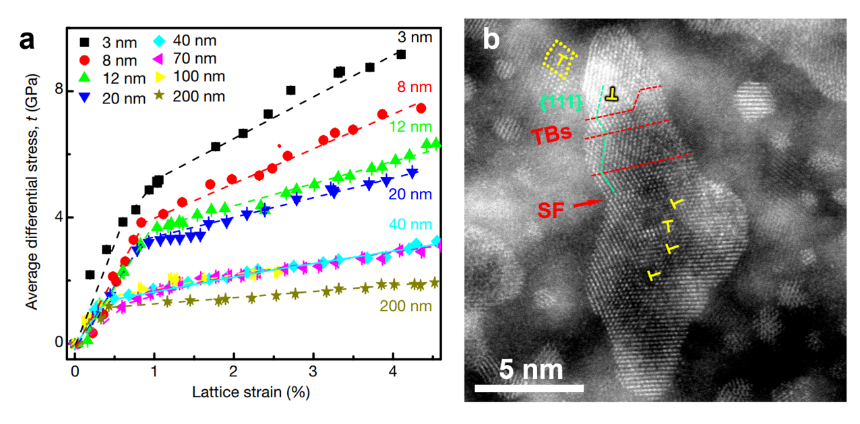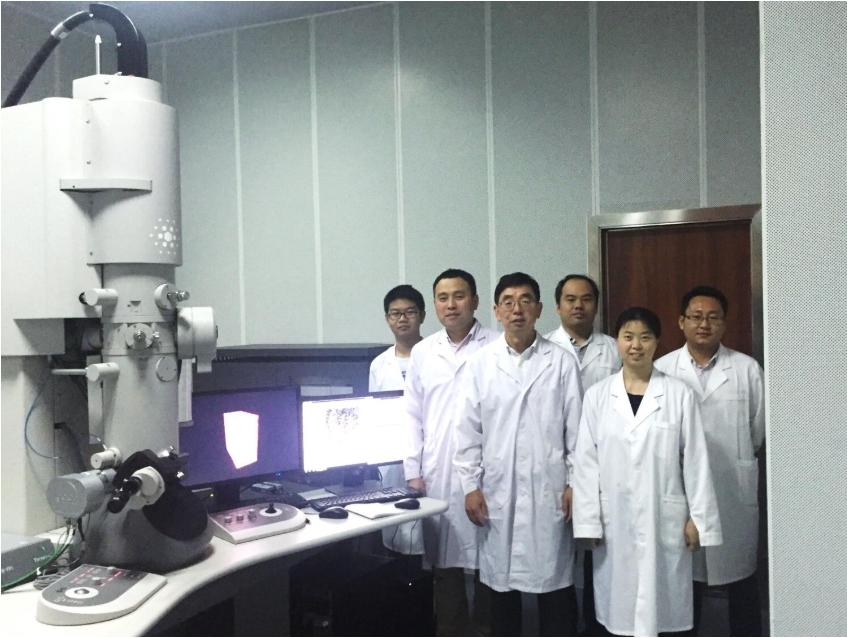Recently, in collaboration with the team led by Researcher Chen Bin from the Center for High Pressure Science & Technology Advanced Research, Professor Huang Xiaoxu's team from the School of Materials Science and Engineering of Chongqing University published their latest research findings in Nature under the title "High-pressure strengthening in ultrafine-grained metals". Professor Huang Xiaoxu is the co-author, Chongqing University is the corresponding co-organization, Feng Zongqiang, a young teacher of the School of Materials Science and Engineering, is the first co-author, and Associate Professor Huang Tianlin is the co-author. The research result is another important progress in the field of material science made by Chongqing University, following the research result published in Science with Chongqing University as the corresponding organization in July 2019.

Screenshot of on-line publishment
Research and development of materials with higher strength is one of the important goals of material science. The strength of the material is closely related to its microstructure. Generally, the smaller the microstructure unit (called "grain") is, the higher the strength is. This law is the main driving force for the study of nano materials. However, in the past two decades, many computer simulation studies and some experimental studies have shown that when the grain size is smaller than a certain critical size (about 10-15 nm), further refinement of the grain will not improve and will reduce the strength of the material. It is generally believed that this softening phenomenon is due to the sliding of the interface between the grains in the nanomaterials which dominates the plastic deformation. However, due to the difficulties in the preparation of high-quality large-scale nanocrystalline materials, it is difficult to accurately measure the mechanical properties of materials with grain size less than 15 nanometers. As such, for the nano metal with finer grain size, the most direct and reliable experimental data are still needed for the establishment of the relationship between its strength and grain size.

(a) Under the condition of high pressure deformation, the strength of pure nickel increases continuously with the decrease of grain size;
(b) The high-resolution TEM image shows the deformed structure and dislocation structure of pure nickel samples with grain size of 3 nm.
In this study, researchers first introduced the high-pressure experimental method in the field of geoscience into the research of nanomaterials, which had creatively solved the technical problem with strength characterization of nanomaterials. The team became the first to report the strengthening phenomenon of nano pure metals with grain size less than 10 nanometers in the world. It has been found that the strength of nano pure nickel increases continuously with the decrease of grain size, and the smaller the grain size, the more remarkable the strengthening effect. The ultra-high yield strength of 4.2 GPa was obtained in the sample with the smallest grain size (3 nm), which was 10 times higher than that of commercial pure nickel. The results of plastic simulation and transmission electron microscopy show that the high-pressure deformation inhibits the grain boundary sliding and promotes the storage of crystal defects (dislocations) which play an important role in strengthening, thus leading to high-pressure fine grain strengthening. The above findings will further reverse the people’s understanding of the phenomenon of critical grain size in the strengthening of nanomaterials, and re-motivate the exploration of obtaining super metals by adjusting the grain size and microstructure of materials.
Huang Xiaoxu’s team has been engaged in the research of electron microscope characterization (Science 2011) and strengthening mechanism of nano metals (Science 20062009, nature 2010), and found some physical phenomena different from those of conventional metals, such as the phenomenon of heating and softening of nano metals. The team proposed the process measures for optimizing the performance of nano metals. In recent years, utilizing resources of the Electron Microscope Center of Chongqing University, the team has undertaken a series of national major research projects, such as projects under the national key research and development program, the national major scientific instrument development project, etc. The above-mentioned Science paper published this time is one of the representative achievements of recent research.

The world’s first three-dimensional transmission electron microscope with the functions including three-dimensional crystal orientation reconstruction and three-dimensional diffraction image reconstruction has been independently developed by some members of Huang Xiaoxu’s research team.
